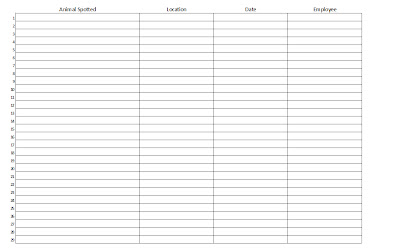 |
| Banff Springs - An example of naturalization |
Despite how beautiful a golf course might look, it is hard to call it truly a natural place. When compared to an industrial plot it might seem that way, but in the end, it is a horticultural environment that is often artificially built and maintained by humans. This isn't a bad thing. Golf courses offer an escape from the city and often provide an oasis for animals and birds. The process of naturalization, the planting and growing of native species, on golf courses is becoming more popular. The Olds College 3-hole course will be looking to integrate this idea into the final design of the course.
Naturalization
Located in the mixedgrass region of Alberta, Olds College is known for its horticultural innovation. What better place to practice naturalization then here? The course will be designed to allow for areas of native grasses and plants. With these areas implemented from design, management and monitoring of these areas will be much easier compared to putting them in after construction.
These areas are often referred to as zero-maintenance, but this is not correct. Maintenance is often significantly reduced, yet some maintenance is still required. After the grass seed is given 3-4 years to establish, annual mowing practices may be put in place. This mowing will take place once a year after the grass has gone to seed. Mowing these areas helps reduce weed populations, remove dry grass (which can be a fire hazard), and encourage the grass to spread. Burning of native areas is an option and will be considered; however, the safety of golfers and the environment from potential damage caused by wildfires is a concern and the decision will be weighed with these parameters in mind.
There are several key areas where the use of native grasses can benefit a golf course. Due to their inability to be mowed short, they cannot be used in fairways and playable rough. However, areas outside of the rough, out-of-play areas, and areas beside bodies of water are potential locations. The following areas and the subsequent mixes chosen are suggested for their ability to thrive in those specified areas. These only apply for the south-east area of Alberta. Other areas may favor different species of grasses. Links are provided to demonstrate who provides these mixes. These areas could include the following mixes of native grass:
- Areas in play (Brett Young - Eco-Turf Blend)
- Creeping Red Fescue - 35%
- Sheep Fescue - 20%
- Chewsings Fescue - 25%
- Hard Fescue - 20%
- Areas out of play (Brett Young - Mixedgrass Subregion Mix)
- Western Wheatgrass - 20%
- Slender Wheatgrass - 10%
- Northern Wheatgrass - 10%
- Green Needlegrass - 15%
- Blue Grama Grass - 15%
- Junegrass - 10%
- Indian Rice Grass - 10%
- Erosion control along areas of runoff (A Guide to Using Native Plants on Disturbed Lands)
- Needle and Thread Grass - 30%
- Blue Grama Grass - 20%
- Northern Wheat Grass - 20%
- Canadian Bluegrass - 15%
- Plains Reed Grass - 15%
- Buffer strips and riparian areas by bodies of water (Alberta Transportation)
- Slender Wheatgrass - 30%
- Canada Wildrye - 15%
- Mountain Brome - 15%
- Northern Wheatgrass - 10%
- Western Wheatgrass - 5%
- Indian Rice Grass - 5%
- Alkali Grass - 10%
- Neeldle and Thread Grass - 10%
What are the benefits of naturalization? Check out what Audubon International has to say regarding the benefits of tall grass and the benefits of naturalization.
Wildlife Management
At the 3-hole course, we want to promote native wildlife in the area. Providin these naturalized areas will give animals shelter, habitat, and safe access to water. Research can be done to see what wildlife favors these native areas and how we can better encourage there presence. The following sheet will be used to observe wildlife presence on the course and will be updated by staff when a sighting is made.

No comments:
Post a Comment